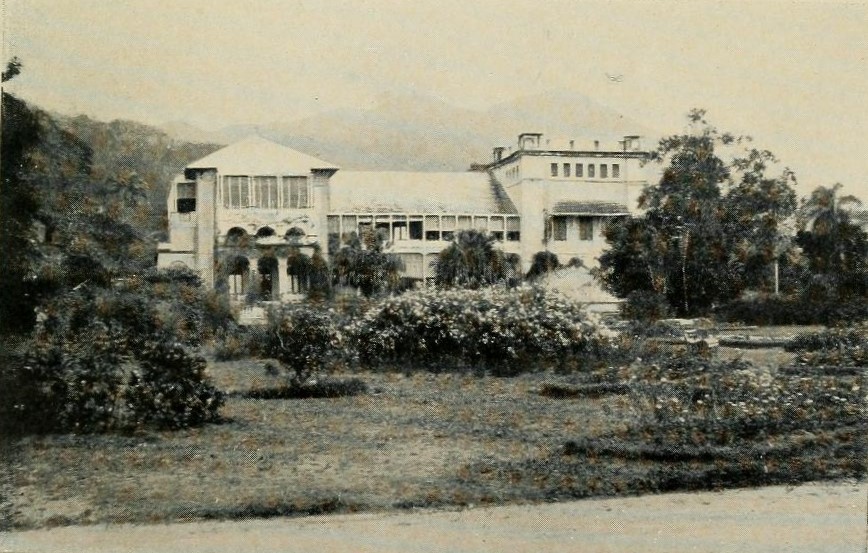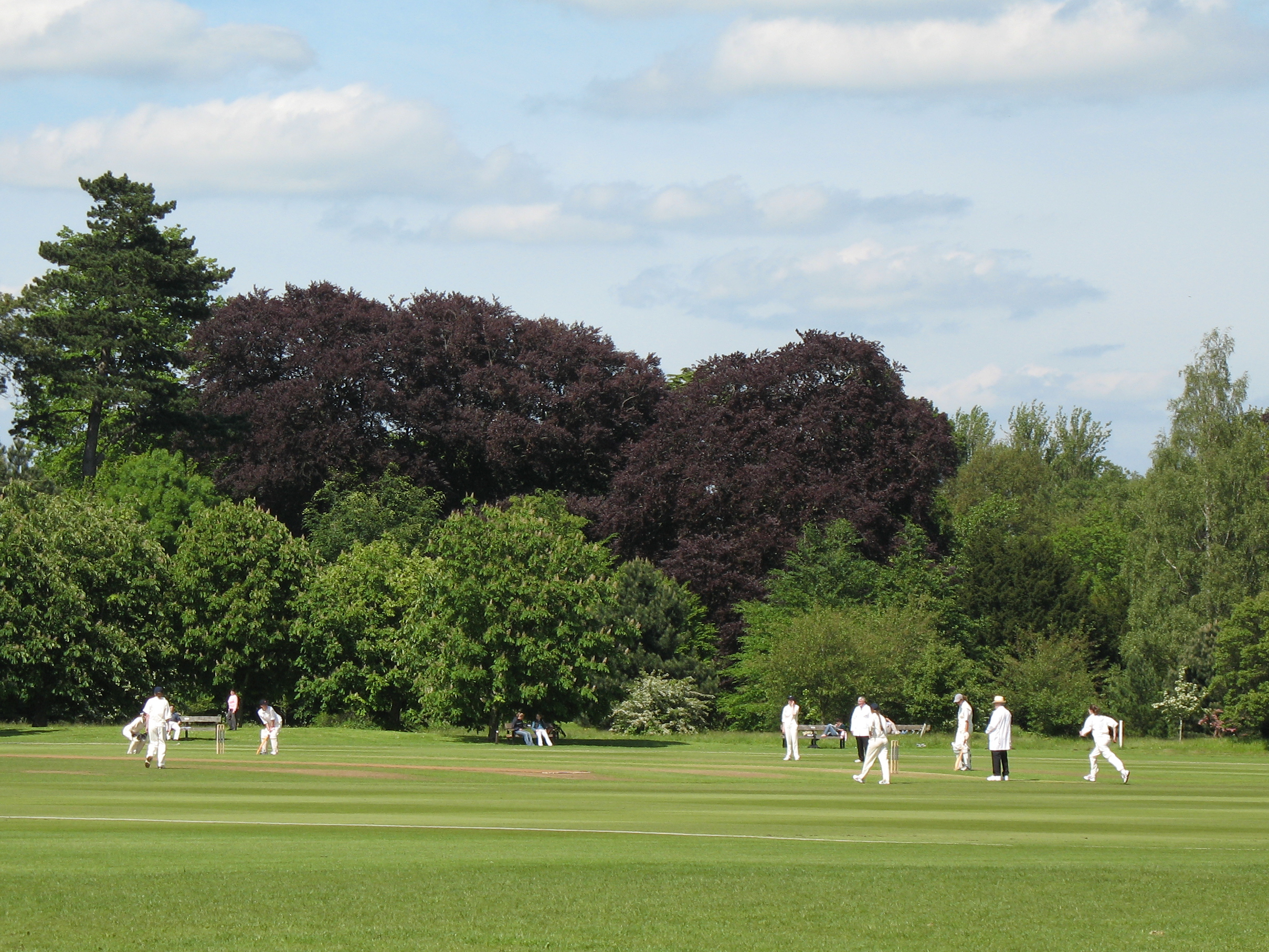|
Wilton St Hill
Wilton H. St Hill (6 July 1893 – c. 1957) was a West Indian international cricketer who played in West Indies' first Test match during their inaugural Test tour of England. A right-handed batman who played in a variety of batting positions, he represented Trinidad in first-class cricket between 1912 and 1930 and played in three Test matches in total. Although his Test record was poor, he was highly regarded in Trinidad. In particular, writer C. L. R. James considered St Hill to be among the top batsmen in the world and dedicated a chapter of ''Beyond a Boundary'' to him. At the peak of his career, Lord Harris described him as the best batsman in the West Indies. Establishing an early reputation playing for the Shannon Club in Trinidad, St Hill was selected for Trinidad in 1912 and played in every Inter-Colonial Tournament until 1930. Although he missed selection for the 1923 tour of England, he played for representative West Indian sides in 1926 against the Marylebone Cricke ... [...More Info...] [...Related Items...] OR: [Wikipedia] [Google] [Baidu] |
Port Of Spain, Trinidad
Port of Spain (Spanish: ''Puerto España''), officially the City of Port of Spain (also stylized Port-of-Spain), is the capital of Trinidad and Tobago and the third largest municipality, after Chaguanas and San Fernando. The city has a municipal population of 37,074 (2011 census), an urban population of 81,142 (2011 estimate) and a transient daily population of 250,000. It is located on the Gulf of Paria, on the northwest coast of the island of Trinidad and is part of a larger conurbation stretching from Chaguaramas in the west to Arima in the east with an estimated population of 600,000. The city serves primarily as a retail and administrative centre and it has been the capital of the island since 1757. It is also an important financial services centre for the CaribbeanCIA World Factbook Trinidad an ... [...More Info...] [...Related Items...] OR: [Wikipedia] [Google] [Baidu] |
Duck (cricket)
In cricket, a duck is a batsman's dismissal with a score of zero. A batsman being dismissed off their first delivery faced is known as a golden duck. Etymology The term is a shortening of the term "duck's egg", the latter being used long before Test cricket began. When referring to the Prince of Wales' (the future Edward VII) score of nought on 17 July 1866, a contemporary newspaper wrote that the Prince "retired to the royal pavilion on a 'duck's egg' ".LONDON from THE DAILY TIMES CORRESPONDENT, 25 July 1866 can be viewed aPaper's past/ref> The name is believed to come from the shape of the number "0" being similar to that of a duck's egg, as in the case of the American slang term "goose-egg" popular in baseball and the tennis term "love", derived – according to one theory – from French ''l'œuf'' ("the egg"). The Concise Oxford Dictionary still cites "duck's egg" as an alternative version of the term. Significant ducks The first duck in a Test match was made in the fi ... [...More Info...] [...Related Items...] OR: [Wikipedia] [Google] [Baidu] |
1893 Births
Events January–March * January 2 – Webb C. Ball introduces railroad chronometers, which become the general railroad timepiece standards in North America. * Mark Twain started writing Puddn'head Wilson. * January 6 – The Washington National Cathedral is chartered by Congress; the charter is signed by President Benjamin Harrison. * January 13 ** The Independent Labour Party of the United Kingdom has its first meeting. ** U.S. Marines from the ''USS Boston'' land in Honolulu, Hawaii, to prevent the queen from abrogating the Bayonet Constitution. * January 15 – The ''Telefon Hírmondó'' service starts with around 60 subscribers, in Budapest. * January 17 – Overthrow of the Kingdom of Hawaii: Lorrin A. Thurston and the Citizen's Committee of Public Safety in Hawaii, with the intervention of the United States Marine Corps, overthrow the government of Queen Liliuokalani. * January 21 ** The Cherry Sisters first perform in Marion, Iowa. ** The T ... [...More Info...] [...Related Items...] OR: [Wikipedia] [Google] [Baidu] |
John Arlott
Leslie Thomas John Arlott, OBE (25 February 1914 – 14 December 1991) was an English journalist, author and cricket commentator for the BBC's ''Test Match Special''. He was also a poet and wine connoisseur. With his poetic phraseology, he became a cricket commentator noted for his "wonderful gift for evoking cricketing moments" by the BBC. Early life John Arlott was born in 1914 at Cemetery Lodge, Chapel Hill, Basingstoke in Hampshire, the son of cemetery registrar William John Arlott and Nellie (née Jenvey-Clarke). He attended Fairfields Primary School in Basingstoke before winning a scholarship to Queen Mary's Grammar School. Once at the school, however, he became embroiled in a feud with the headmaster, as the school "had not been wholly receptive to his young, independent, inquiring mind." Arlott eventually left the school of his own accord. He meanwhile showed an early interest in the local cricket matches; in 1926 he watched England and Australia play at The Oval, beco ... [...More Info...] [...Related Items...] OR: [Wikipedia] [Google] [Baidu] |
George John (cricketer)
George John (c. 1883 – January 14, 1944) was a West Indian fast bowler. George John was a very fast bowler in his prime and could cut the ball into the batsmen. He toured England with West Indies side in 1923 but by then was past his best. He claimed 90 wickets at 14.68 in all matches, 49 of them at 19.51 in first class matches. Against Glamorgan he took 10 for 147 and at Scarborough, with George Francis, reduced a near Test quality HDG Leveson Gower's XI to 19 for 6 as they were chasing 28 to win in the second innings.The West Indians would have won, says CLR James, but for some atrocious umpiring John took 5 for 54 for Trinidad against MCC in 1925-26 when he was over forty years of age. C. L. R. James who often played against him has left a picture of what John the bowler looked like : :''He was just the right height, about five foot ten, with a chest, shoulders and legs on him all power and proportion... He was one of those rare fast bowlers who proposed to defeat you ... [...More Info...] [...Related Items...] OR: [Wikipedia] [Google] [Baidu] |
Leg Before Wicket
Leg before wicket (lbw) is one of the ways in which a batsman can be dismissed in the sport of cricket. Following an appeal by the fielding side, the umpire may rule a batter out lbw if the ball would have struck the wicket but was instead intercepted by any part of the batter's body (except the hand holding the bat). The umpire's decision will depend on a number of criteria, including where the ball pitched, whether the ball hit in line with the wickets, the ball's expected future trajectory after hitting the batsman, and whether the batter was attempting to hit the ball. Leg before wicket first appeared in the laws of cricket in 1774, as batsmen began to use their pads to prevent the ball hitting their wicket. Over several years, refinements were made to clarify where the ball should pitch and to remove the element of interpreting the batsman's intentions. The 1839 version of the law used a wording that remained in place for nearly 100 years. However, from the latter part of ... [...More Info...] [...Related Items...] OR: [Wikipedia] [Google] [Baidu] |
Batting (cricket)
In cricket, batting is the act or skill of hitting the ball with a bat to score runs and prevent the loss of one's wicket. Any player who is currently batting is, since September 2021, officially referred to as a batter (historically, the terms "batsman" and "batswoman" were used), regardless of whether batting is their particular area of expertise. Batters have to adapt to various conditions when playing on different cricket pitches, especially in different countries - therefore, as well as having outstanding physical batting skills, top-level batters will have quick reflexes, excellent decision-making and be good strategists. During an innings two members of the batting side are on the pitch at any time: the one facing the current delivery from the bowler is called the striker, while the other is the non-striker. When a batter is out, he is replaced by a team-mate. This continues until the end of the innings, which in most cases is when 10 of the team members are out ... [...More Info...] [...Related Items...] OR: [Wikipedia] [Google] [Baidu] |
Learie Constantine
Learie Nicholas Constantine, Baron Constantine, (21 September 19011 July 1971) was a West Indian cricketer, lawyer and politician who served as Trinidad and Tobago's High Commissioner to the United Kingdom and became the UK's first black peer. He played 18 Test matches before the Second World War and took the West Indies' first wicket in Test cricket. An advocate against racial discrimination, in later life he was influential in the passing of the 1965 Race Relations Act in Britain. He was knighted in 1962 and made a life peer in 1969. Born in Trinidad and Tobago, Constantine established an early reputation as a promising cricketer, and was a member of the West Indies teams that toured England in 1923 and 1928. Unhappy at the lack of opportunities for black people in Trinidad and Tobago, he decided to pursue a career as a professional cricketer in England, and during the 1928 tour was awarded a contract with the Lancashire League club Nelson. He played for the club with d ... [...More Info...] [...Related Items...] OR: [Wikipedia] [Google] [Baidu] |
Fielding (cricket)
Fielding in the sport of cricket is the action of fielders in collecting the ball after it is struck by the striking batter, to limit the number of runs that the striker scores and/or to get a batter out by either catching a hit ball before it bounces, or by running out either batter before they can complete the run they are currently attempting. There are a number of recognised fielding positions, and they can be categorised into the offside and leg side of the field. Fielding also involves preventing the ball from going to or over the edge of the field (which would result in runs being scored by the batting team in the form of a boundary). A ''fielder'' or ''fieldsman'' may field the ball with any part of his body. However, if while the ball is in play he wilfully fields it otherwise (e.g. by using his hat), the ball becomes dead and five penalty runs are awarded to the batting side, unless the ball previously struck a batter not attempting to hit or avoid the ball. ... [...More Info...] [...Related Items...] OR: [Wikipedia] [Google] [Baidu] |
Wisden Cricketers' Almanack
''Wisden Cricketers' Almanack'', or simply ''Wisden'', colloquially the Bible of Cricket, is a cricket reference book published annually in the United Kingdom. The description "bible of cricket" was first used in the 1930s by Alec Waugh in a review for the ''London Mercury''. In October 2013, an all-time Test World XI was announced to mark the 150th anniversary of ''Wisden Cricketers' Almanack''. In 1998, an Australian edition of ''Wisden Cricketers' Almanack'' was launched. It ran for eight editions. In 2012, an Indian edition of ''Wisden Cricketers' Almanack'' was launched (dated 2013), entitled ''Wisden India Almanack'', that has been edited by Suresh Menon since its inception. History ''Wisden'' was founded in 1864 by the English cricketer John Wisden (1826–84) as a competitor to Fred Lillywhite's '' The Guide to Cricketers''. Its annual publication has continued uninterrupted to the present day, making it the longest running sports annual in history. The sixth e ... [...More Info...] [...Related Items...] OR: [Wikipedia] [Google] [Baidu] |
Oxford University Cricket Club
Oxford University Cricket Club (OUCC), which represents the University of Oxford, has always held first-class status since 1827 when it made its debut in the inaugural University Match between OUCC and Cambridge University Cricket Club (CUCC). It was classified as a List A team in 1973 only. Home fixtures are played at the University Parks slightly northeast of Oxford city centre. History The earliest reference to cricket at Oxford is in 1673. OUCC made its known debut in the inaugural University Match between Oxford and Cambridge played in 1827. In terms of extant clubs being involved, this is the oldest major fixture in the world: i.e., although some inter-county fixtures are much older, none of the current county clubs were founded before 1839 (the oldest known current fixture is Kent ''versus'' Surrey). The Magdalen Ground was used for the University Cricket Club's first match in 1829, and remain in regular use until 1880. Bullingdon Green was used for two matches in 18 ... [...More Info...] [...Related Items...] OR: [Wikipedia] [Google] [Baidu] |
Swing Bowling
Swing bowling is a technique used for bowling in the sport of cricket. Practitioners are known as swing bowlers. Swing bowling is generally classed as a subtype of fast bowling. The aim of swing bowling is to cause the ball to move in the air (or 'swing') whilst delivering mainly fast-paced balls to the batsman, in the hope that the change in the ball's flight path will deceive the batsman and cause them to play the ball incorrectly. Swing bowling is not to be confused with spin bowling, which involves bowling slow-pace balls which change direction primarily after making contact with the ground. Swing bowling involves the use of a newer ball which is only slightly worn. The bowling side will continually polish one side of the ball by applying saliva and sweat to it as well as rubbing it against their clothing to shine it, whilst leaving the opposite side unshined. The speed of airflow over the rough and smooth sides of the ball will cause the ball to move in flight towards th ... [...More Info...] [...Related Items...] OR: [Wikipedia] [Google] [Baidu] |








